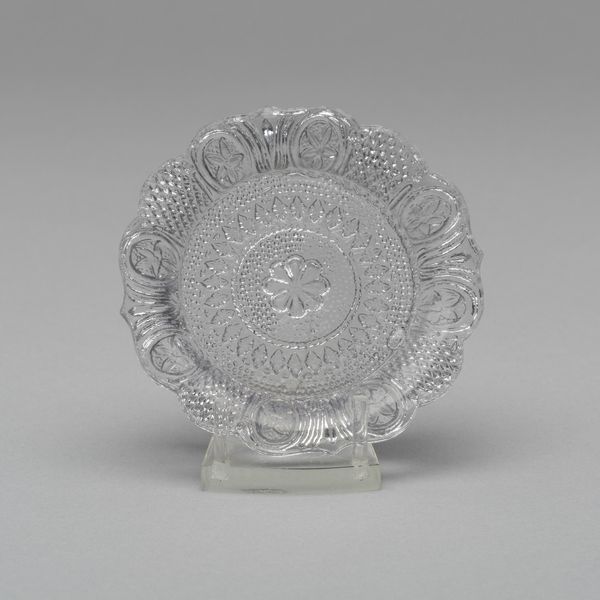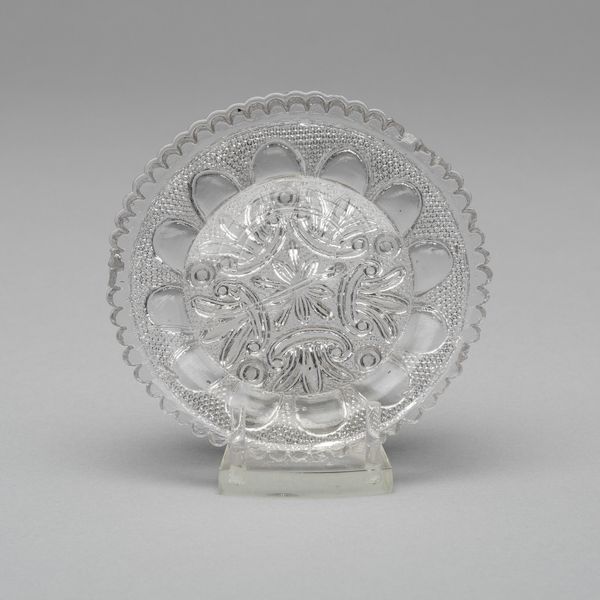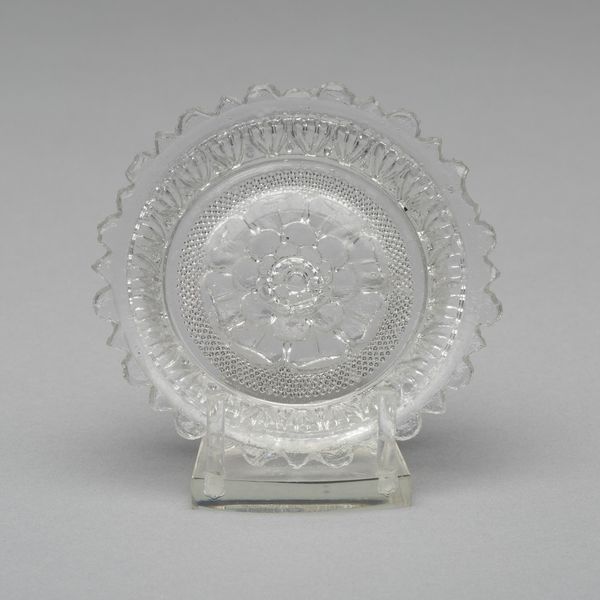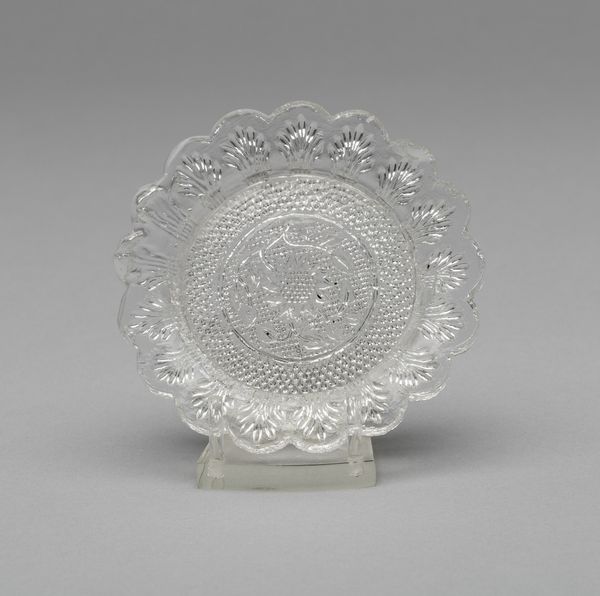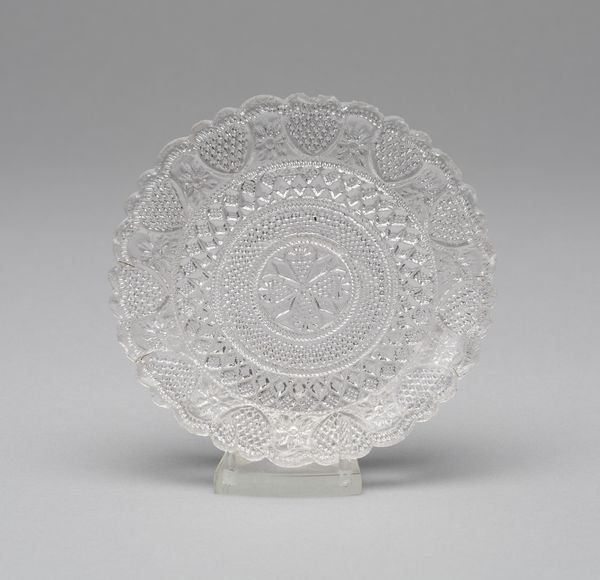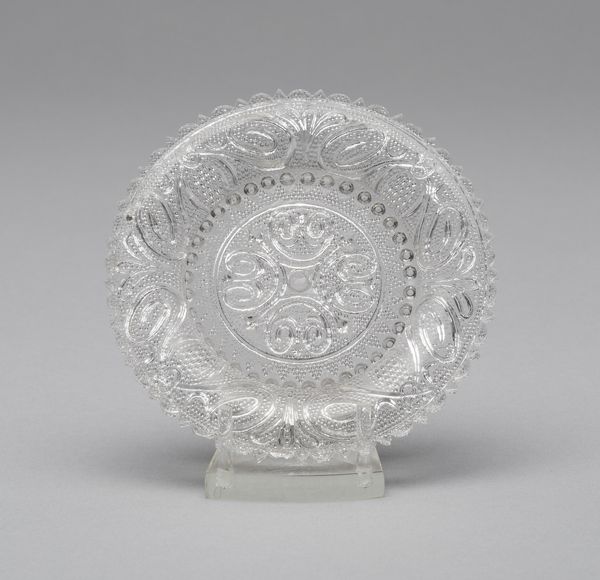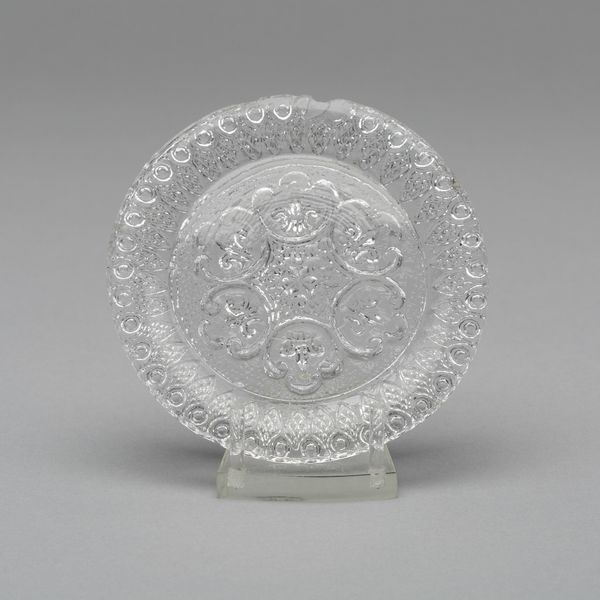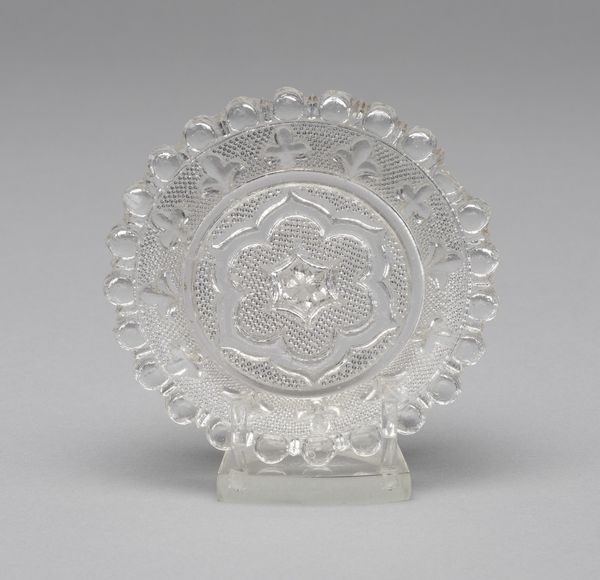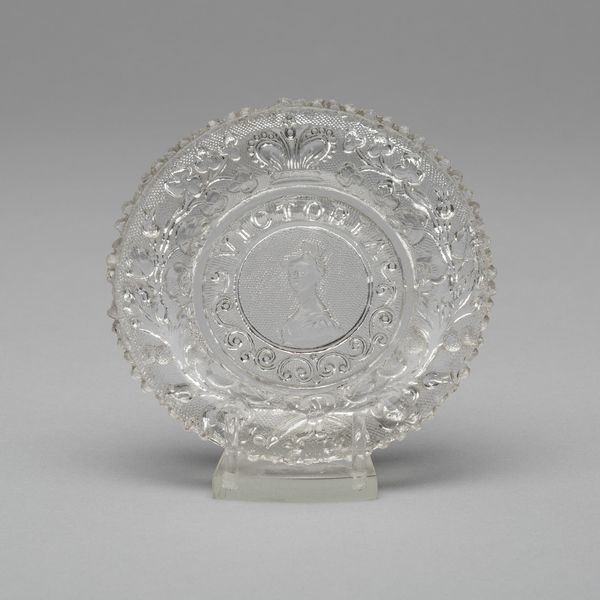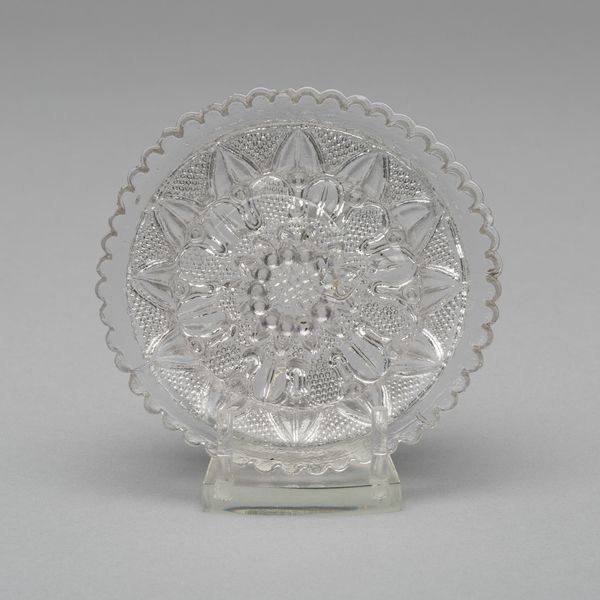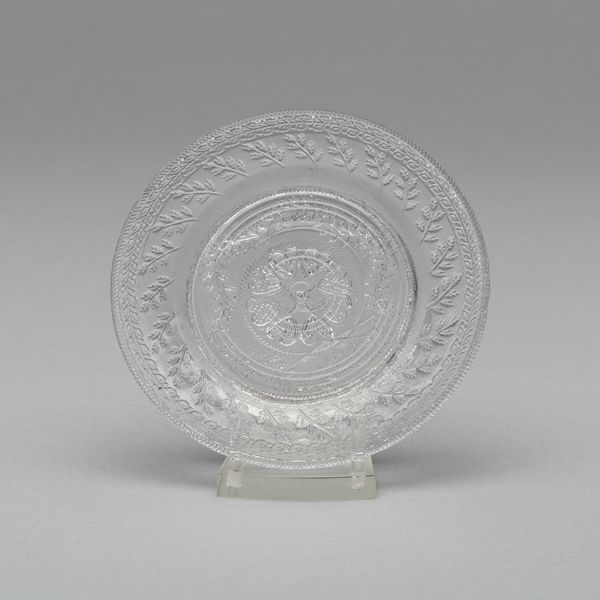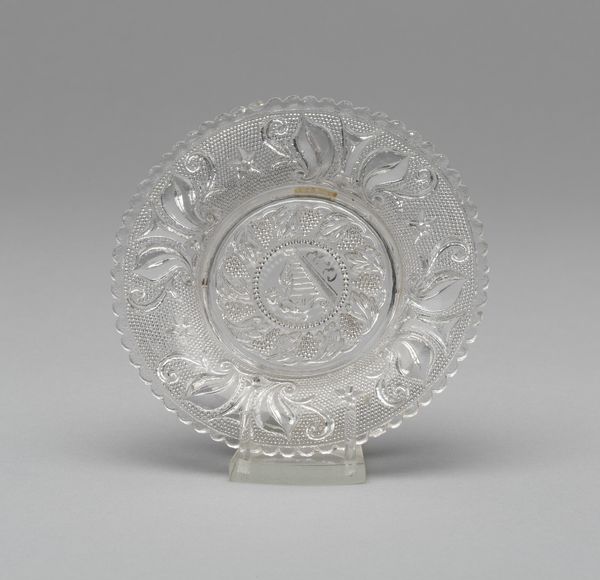
glass
#
glass
#
geometric
#
england
#
decorative-art
Dimensions: diam. 9.1 cm (3 9/16 in.)
Copyright: Public Domain
Curator: Ah, look, it’s delicate. An anonymous English glass cup plate, dating from around 1827. It resides here, at the Art Institute of Chicago. What strikes you about it? Editor: There’s a certain luminescence to it. All those repetitive geometric patterns cut into the clear glass – they really capture and refract light. It seems almost aggressively decorative. Curator: Exactly! Think of the rise of industrialization during that period. Ordinary objects became opportunities to showcase new manufacturing prowess. Patterns previously reserved for the aristocracy could suddenly be mass-produced, making them available to a wider audience. Editor: So the geometric design is a statement? The inner concentric design certainly creates an enclosed effect, reinforcing the visual weight of the circle. Is there a kind of protection suggested in it, through all those minute, densely arranged tessellations? Curator: A decorative cup plate such as this provided an essential safeguard against damaging delicate furniture, reflecting shifting social standards of the time and a growing awareness of material possessions among the rising middle class. Each motif embodies shared historical associations and communal behaviors—the act of partaking in tea, of cultivating manners. Editor: Fascinating. So it’s not merely a functional object, it’s also a social artifact— encoding beliefs and class distinctions in something as simple as pressed glass. It serves both the individual consumer and broader cultural rituals. Curator: Yes, these cup plates often showcase symbols resonating deeply with that culture. Although its transparency seems at odds with having a decorative message to broadcast, this object nevertheless provided silent instruction in its owners' aesthetic inclinations and aspirations for refined taste. Editor: The repetition then speaks volumes; the clarity of glass almost paradoxically highlights the intricate work, creating a kind of transparent solidity, as if asserting a particular form's prominence. Curator: Right. Something about this small, utilitarian item preserves much more than mere utility: social narratives, technological transformations and an enduring sense of beauty accessible to all. Editor: I leave thinking this isn’t simply decorative; it’s almost a tiny historical novel encapsulated in fragile glass.
Comments
No comments
Be the first to comment and join the conversation on the ultimate creative platform.
